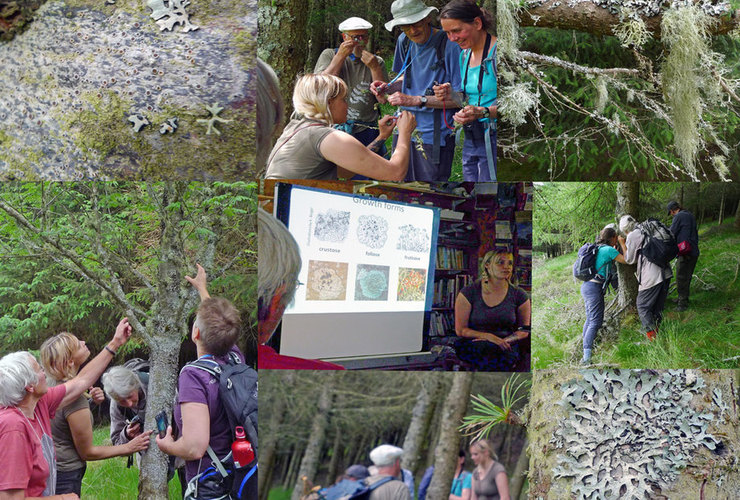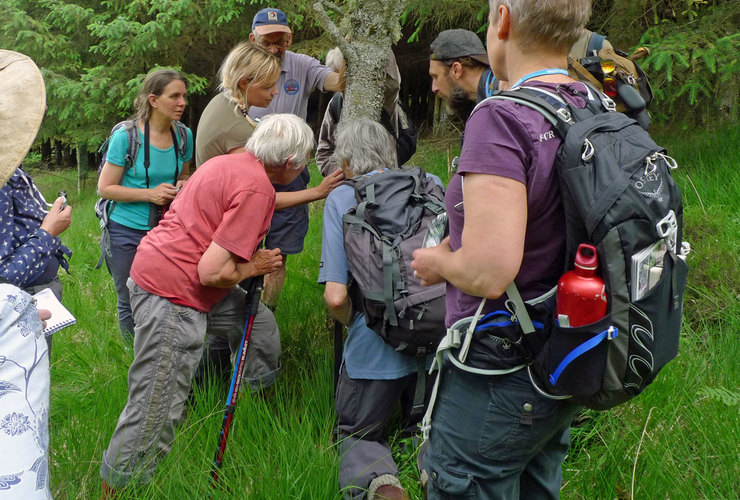Field Notes: Taking a closer look at Glenlude
Lichen specialist Verity Brosnan inspires us to get up close and personal using hand lenses at the Trust’s smallest property

On a wet day in June, a dozen nature enthusiasts met at the Trust’s Glenlude estate in the Scottish Borders to find out about one of our hardiest and most ancient pioneering species – lichens.
Leading the walk and talk was Verity Brosnan who was brought up in a relatively lichen free Suffolk. Her interest started when she moved to Scotland six years ago: “I noticed the trees here are covered an amazing patchwork quilt of textures and colours that really captivated me. And then, when you are really up close, you see a very different world and go down the rabbit hole.”
Verity studied the biodiversity and taxonomy of plants at the Royal Botanic Garden Edinburgh: “I had an amazing teacher who really engaged me with the qualities of lichens. My thesis project involved surveying the west coast of Scotland – from the Skye area all the way down to inner Glasgow and over to Lanarkshire. I was out in the field and looking at lichens from a pollution gradient as well as looking a species composition and biodiversity from ancient woodland to more recent woodland.”
Fortunately for us, she pitched her illustrated walk and talk at Glenlude at beginners, explaining that a lichen isn’t a single organism: “It isn’t one of anything, it can be several things made up together.
“It’s a symbiotic relationship or a mutualistic relationship with a fungus (known as the micobions) and the algael (known as the photobions). It can also be cyanobacterial as well (simple chain bacteria)…
“There’s a bit of give and take… Algae provide the nutrients because they photosynthesise and they give the simple sugars to the fungus. In return, the algae get a stable environment to live and grow in. That stable environment protects them from UV radiation and it provides them with further minerals and water to survive. It’s almost like a safe house for them. The fungus also gives the algae health benefits because they provide specialised nutrients.”
Next Verity explained that lichens can be identified by observing the way they grow. “Crustose lichens are found pressed on to a substrate – eg rock, trees etc. You won’t be able to pick them off with your finger. Foliose lichens are leafy. You can pick at them and they will come away. Fruticose lichens are 3D lichens. They are more malleable – you can fully pick them up. Squamulose lichens look like patchwork, or fish scales. They are overlaid like roof tiles but are very tiny. Placodioid are a crustose species, but they radiate out in a perfect circle.”
After familiarising ourselves with specimens using a microscope, we joined Verity on a walk around two contrasting woodlands at Glenlude. We left feeling that we too had fallen into the 'rabbit hole' of lichen love and enjoyed learning more about the estate's very special ecology.


